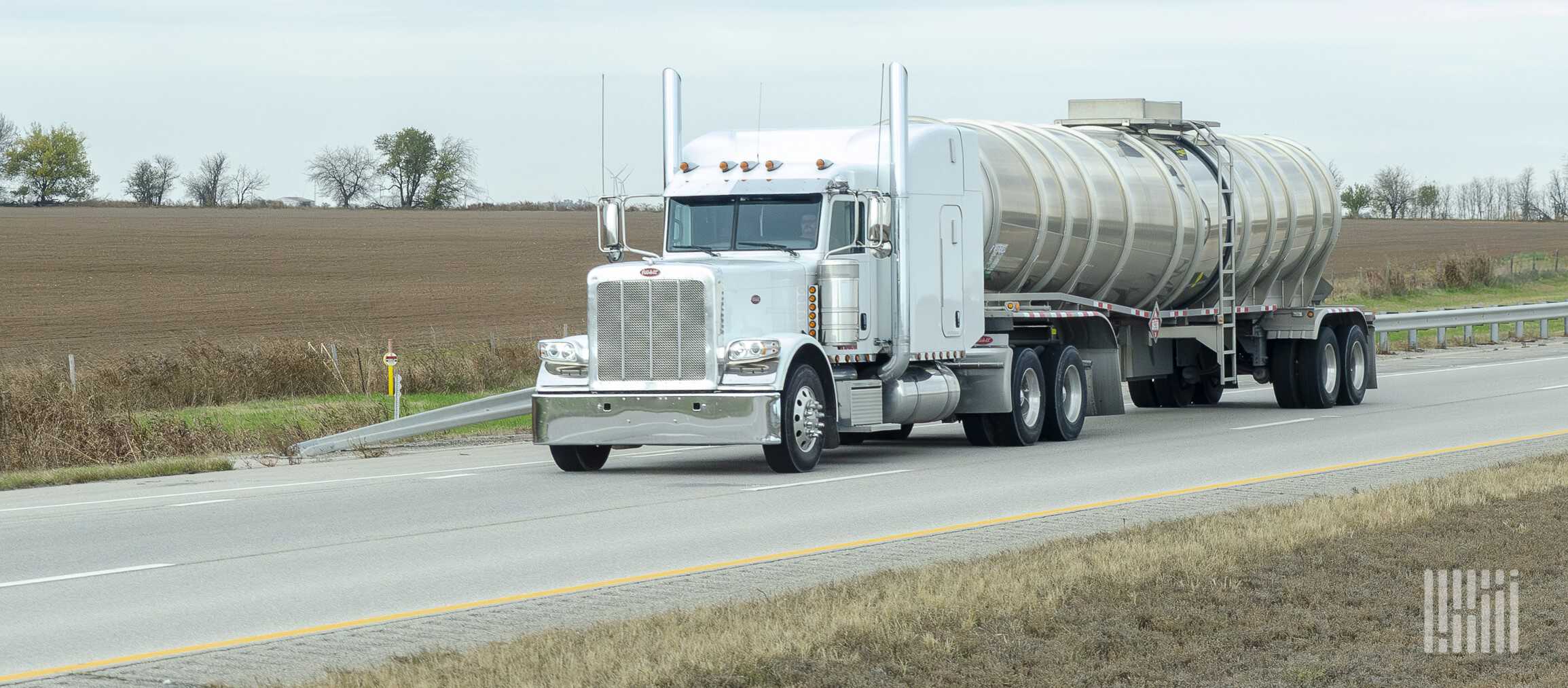Shipping hazardous materials requires familiarity with many types of dangerous substances, each of which necessitates specific handling procedures and signage. The U.S. Department of Transportation (DOT) hazard classification system features nine categories called “hazard classes.” Each class of hazardous materials has a unique set of properties that makes its items dangerous.
What makes materials hazardous?
Hazardous materials are harmful to humans, animals or the environment. The specific dangers vary from substance to substance, but all can cause damage in some way.
Which products are classified as hazmat?
Hazmat is short for hazardous materials.
Products that require hazmat handling pose have properties associated with one or more of the nine hazardous materials classes. Even common consumer products like lithium-ion batteries, paint thinners, fertilizers and pesticides can contain hazardous materials.
Shipping regulations for hazmat products are strict due to the risk of contamination at delivery. Products containing hazardous materials require a safety data sheet (SDS) to explain proper packing and shipping procedures.
Radioactive materials are commonly shipped inside containers weighing several tons in packaging that prevents radiation leaks. As for shipping liquids, SDSs usually specify storage in drums made of plastic or metals like aluminum or steel. Companies interested in transporting hazardous materials must be familiar with each substance’s SDS and processing procedures.
Shipping papers must also be filled out correctly according to the Code of Federal Regulations (CFR) and the DOT. Drivers must have a hazmat endorsement, which is represented on their commercial driver’s license (CDL) by the letter H.
9 hazardous material classes
The DOT’s hazardous material classes are a comprehensive list of dangerous materials. Regulations govern how shippers may handle, package and transport them, including their respective markings, labels and placards.
Class 1: Explosives
Materials in Class 1 pose a risk of combustion. Each division details a different type of risk within this category, and in general, the risk decreases with higher numbers.
- Division 1.1: Explosives posing a mass explosion hazard
- Division 1.2: Explosives posing a projection hazard
- Division 1.3: Explosives posing predominantly a fire hazard
- Division 1.4: Explosives posing no significant blast hazard
- Division 1.5: Very insensitive explosives
- Division 1.6: Extremely insensitive explosive articles
Class 2: Gasses
Gasses comprise a wide range of substances, and their danger varies. Because gasses can disperse easily, great care must be taken to ensure they’re contained.
Just because gasses under Division 2.2 are nonflammable doesn’t mean they’re safe. For example, the extremely cold temperatures of cryogenic liquids, which have boiling points lower than -130° Fahrenheit (-90° Celcius), are highly dangerous to animals and humans.
- Division 2.1: Flammable gasses like propane, spray paint or acetylene
- Division 2.2: Non-flammable gasses like helium, nitrogen and argon
- Division 2.3: Poison gasses like carbon monoxide
- Division 2.4: Corrosive gasses like ammonia or chlorine
Class 3: Flammable liquids
Liquids that may combust when exposed to an open flame or spark. The divisions represent the temperatures at which these liquids reach their flashpoints. Class 3 materials can include alcohol, perfume and gasoline.
- Division 3.1: Flashpoint below 0°F
- Division 3.2: Flashpoint from 0°F to 73°F
- Division 3.3: Flashpoint from 73°F to 141°F
Class 4: Flammable solids
Like the materials in Class 3, these materials are combustible in the presence of fire. However, Class 4 materials are solid and have divisions based on properties other than temperature-based flashpoints.
- Division 4.1: Flammable solids like nitrocellulose products
- Division 4.2: Spontaneously combustible materials like oily rags
- Division 4.3: Materials that are dangerous when wet, such as sodium
Class 5: Oxidizers and organic peroxides
These materials essentially create their own fuel source under ignition. As Class 5 substances burn, they create oxygen, which can continue and even increase their combustion rate.
- Division 5.1: Oxidizers like hydrogen peroxide (greater than 20%)
- Division 5.2: Organic peroxides like ammonium nitrate
Class 6: Poisons and etiologic materials
Class 6 materials pose a risk to life when inhaled or ingested due to toxicity. While division 6.1 materials are naturally occurring or man-made, Division 6.2 materials include pathogens and even microorganisms.
- Division 6.1: Poisonous materials like lead or pesticides
- Division 6.2: Etiologic (infectious) materials like prions or bacteria
Class 7: Radioactive materials
Radiation poses a great risk even in airtight containers because it can’t be enclosed in a conventional way. For this reason, radioactive materials must be stored in vessels that can block ionizing radiation.
Radioactive substances must emit more than 0.002 microcuries per gram to qualify as Class 7 hazards.
Class 8: Corrosive
These materials can break down other substances and cause noticeable destruction, including organic tissue. Class 8 materials can be liquid or solid.
Class 9: Miscellaneous
Materials that don’t fit into the first eight classes but can still pose a danger during transport are grouped into Class 9. These may include dry ice, lithium-ion batteries, anesthetics, asbestos and mechanical devices like chainsaws.
Shipping hazardous materials requires experience, responsibility regulatory compliance
While some hazardous materials are relatively innocuous, such as helium tanks, others, like nuclear fuel rods, can be serious threats.
Shippers who handle hazardous materials must be familiar with DOT and CFR regulations, have the right endorsements and use the appropriate placards and labels. The penalties for non-compliance can include six-figure fines and a permanent ban from shipping hazardous materials.
Hazmat products are shipped around the world every day with no issues. As long as transporters follow the rules, they can be trusted to ship dangerous materials.
FAQ
Hazardous materials are substances that pose a risk to living beings and/or the environment upon exposure.
There are nine hazardous materials classes in total, the final class (Class 9) being a catch-all for materials that don’t fit readily into the other eight categories.
There are three major types of hazmat. The first is mixed radiological and hazardous wastes. The second is “listed wastes” that fall on the Environmental Protection Agency’s F, K, P or U lists. The final type is characteristic waste, which has specific properties that make it dangerous by nature.




